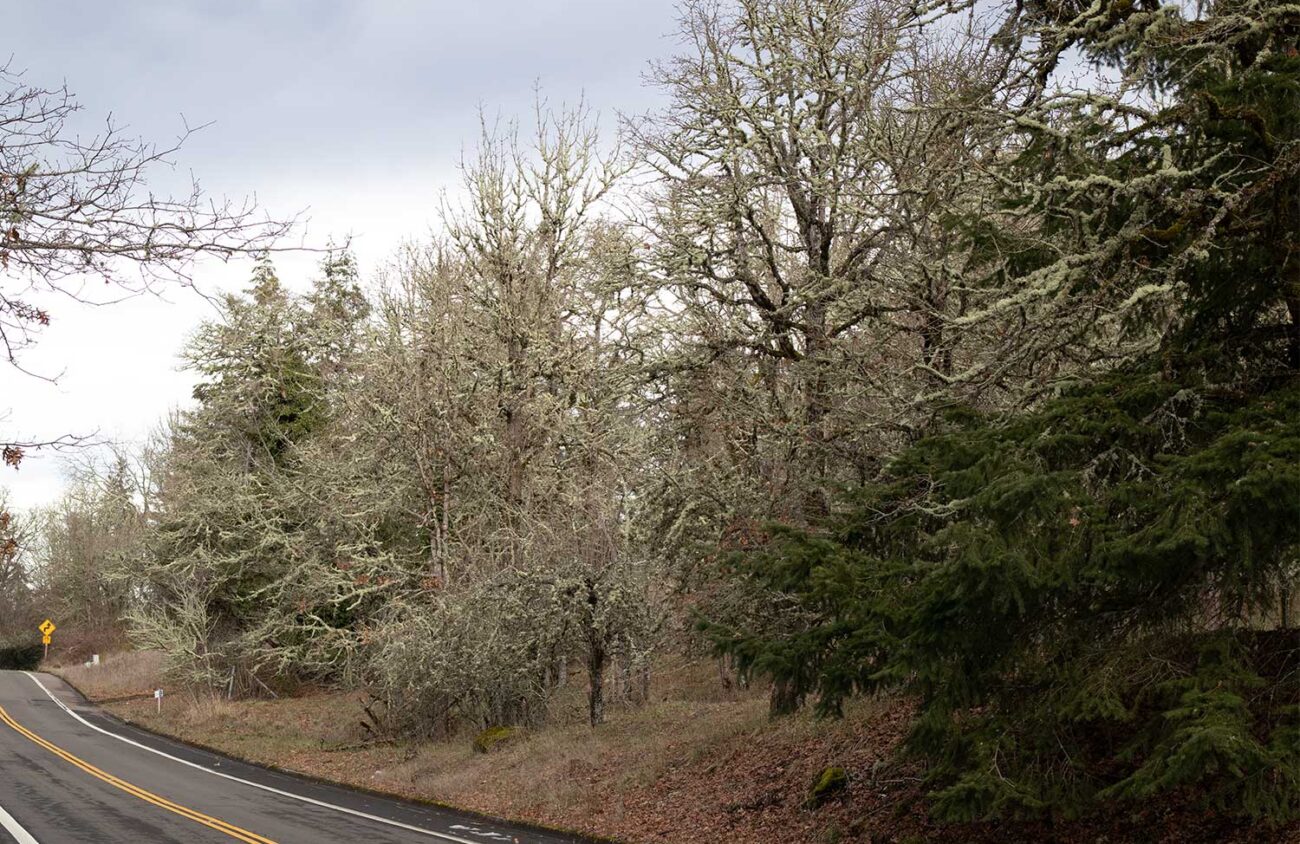A Southwest Eugene wetland parcel with grassy fields, oak trees, natural springs and abundant wildlife may be overrun with excavators and concrete as development looms.
In recent years, Piculell Properties, a development company based in Phoenix, Arizona, has developed the land around what’s called Videra Oak Meadow into the upscale Braewood Hills subdivision. Now, Piculell is attempting to move forward on its development plans for Videra Oak Meadow itself, the last piece of land the company owns in the area. Piculell aims to develop the 15-acre tract into 38 single-family housing lots.
Yet, winning city planning approval has been a challenge for Piculell, as neighbors fiercely oppose the project. They’ve formed a nonprofit, Save Videra Oak Meadow, to try to raise money to buy the land and donate it to the city as an addition to the existing adjacent city-owned Videra Park.
“Our primary goal is to purchase the land and preserve it as an open space for anybody and everybody to enjoy,” says Julie Butler, a member of Save Videra Oak Meadow. “We’re not anti-development. We’re anti-dig-and-destroy.”
The Lane County Assessor’s Office says the land, zoned for low-density residential development, has a market value of $1.25 million.
Bill Kloos, Piculell Properties’ attorney, did not respond to Eugene Weekly’s request for comment.
The site is at the extreme southwest edge of Eugene, at the far south end of the Churchill neighborhood, where the wooded hills have gradually been developed over with spendy single-family homes.
A big issue in dispute is what degree of control the city has over tree removal. About half the site is wooded, and Piculell might need to clear many trees to create buildable lots.
One of the primary issues Picullel has appealed to the Eugene Planning Commission is whether Videra Oak Meadow is included in the city’s Goal 5 inventory. Goal 5 is a statewide planning goal that aims to preserve wildlife habitat. However, when a plot of land is classified as Goal 5, the city’s strict tree preservation and removal standards no longer apply to the land. Goal 5’s preservation standards are more lax, requiring only that “conflicts” between development and preservation be “minimized.”
“There are native white oaks on the property,” Butler said. “There is at least one that we know of that’s at least 300 years old… You can’t just erase history like that.”
Whether Videra Oak Meadow is a Goal 5 resource has been debated by Piculell and the city. The confusion lies in a map that was drafted in 1978. City staff and Piculell argue that the 1978 “Scenic Sites Working Paper” designates the property as one of the “Natural Sites of Visual Prominence and Prominent and Plentiful Vegetation,” thus categorizing the land as Goal 5 inventory.
However, the city’s hearings official and supporters of Save Videra Oak Meadow concluded that the 1978 document and the accompanying map were never adopted as part of the city’s Goal 5 inventory.
“From the map, it is difficult to identify any lot, let alone the development lot,” Lloyd Helikson, a supporter of Save Videra Oak Meadow, wrote in his testimony to the hearings official last year.
But at a Planning Commission meeting on Jan. 28, commissioners sided with Piculell and city staff, deeming the property a Goal 5 resource and thus eliminating the city’s tree removal and preservation standards.
“There’s a very large outstanding question of interpretation over the state land use laws,” says Keri Green, another Save Videra Oak Meadow member. “The city has been flip-flopping on its interpretations.”
Save Videra Oak Meadow supporters are also concerned about firefighting vehicle access to the proposed development.
Save Videra Oak Meadow supporters argue that the plan lacks secondary access points, although the city’s public works staff said secondary access standards were satisfied by the proposed construction of emergency vehicle turnarounds and by the existing intersection of Randy Lane and Blacktail Drive.
But both the hearings official and Save Videra Oak Meadow supporters argue that the proposed turnarounds do not serve as secondary access. Butler says almost all the proposed lots have only a single access point.
“We’re literally two blocks away from the urban growth boundary and we’re extremely aware of wildfire danger,” Butler says.
Last month, the Planning Commission recommended modifying the proposal to find that the secondary access requirements are met and “No Parking Fire Lane” signage is not required.
Beyond technical development issues, supporters of Save Videra Oak Meadow want to preserve the site’s wetlands. According to the “Save Videra Oak Meadow” website, Piculell’s proposal would fill or partially fill about 70 percent of the site’s wetlands, potentially causing erosion and flooding and damaging wildlife habitats. Piculell Properties has applied for a joint permit application. This application is used when a project may require permits from federal and state agencies in order to adhere to wetland regulations.
Typically, developers can fill wetlands if they pay to create a similar amount and quality of wetlands elsewhere.
Bricks $ Mortar is a column anchored by Christian Wihtol, who worked as an editor and writer at The Register-Guard in Eugene 1990-2018, much of the time focused on real estate, economic development and business. Reach him at Christian@EugeneWeekly.com.
